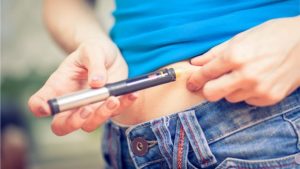1. What is stem cell and how to treat diabetes?
Stem cell is a kind of cell with various differentiation potentials. In appropriate environment, they can differentiate into various cells like “seeds”, they grow in various tissues and organs, and pass a certain number of autologous stem cells. When the stem cell migrates into the pancreatic tissue, the stem cell will differentiate and proliferate into islet-like cells under the induction of the microenvironment of the pancreatic tissue, and replace the damaged islet β-cell to secrete insulin, which plays a role in treating diabetes.
2. Which part of the body does the stem cell exist?
Adult stem cells are mainly found in the bone marrow, but after drug mobilization, the number of stem cells required for treatment can also be achieved in the peripheral blood.
3.Whose stem cells are used?
With the patient’s own, there is no problem of infectious diseases, donor deficiency and immune rejection, and the safety is good.
4.How to extract peripheral blood stem cells?
Autologous peripheral blood stem cell transplantation requires only drug mobilization, and then the stem cells are separated by a blood cell separator machine ( Apheresis Machine), and then extracted to transplant.
5.How to transplant back the peripheral blood stem cells?
The spare stem cells extracted in advance are transplanted back into the body by intravenous injection.
6.Is autologous peripheral blood stem cell transplantation safe?
Very safe. Autologous peripheral blood stem cells are collected in a closed environment, using disposable materials from Germany to eliminate and avoid the possibility of contamination. Arterial catheter infusion is performed by trained catheter specialists to minimize catheter-related complications. So far, the incidence of transplant-related complications has been zero.
7.How long does it take to start reducing the amount of hypoglycemic agents after this treatment?
It takes about 3-6 months after treatment, and gradually reduces the amount of hypoglycemic drugs based on monitoring blood sugar.
(However, some glycosylated hemoglobin and diabetic patients with high blood sugar levels should have at least 2-3 peripheral blood stem cell transplants)
8.What are the adverse reactions of this treatment?
Patients may have mild bone and back pain during the stem cell mobilization phase, but they are completely tolerable. No obvious discomfort and adverse reactions were found in the cases performed, and the safety was good.
9.If this treatment fails, will it aggravate the patient’s condition of diabetes? Because the patient’s own stem cells are used, there is no damage to the body, so the patient’s original diabetes condition will not be aggravated.
10.What age is suitable for this treatment?
It is best to be 18-65 years old. If you are in good health, the age range can be relaxed.
11.Who should do peripheral blood stem cell treatment?
You can consider autologous stem cell transplantation with the following conditions: (1) Type 2 diabetes patients (2) Age 18-65 years old; (3) Reasonable application of insulin and/or oral drug glycemic control is acceptable.

12.How to choose the timing of autologous stem cell transplantation?
From the clinical experience of autologous stem cell transplantation in the treatment of diabetes, although this therapy is effective for different types of diabetes at different stages, in the range of indications, the younger the patient, the shorter the course of disease, the less complications of diabetes. The better the treatment and the better the treatment safety, so it’s best to hurry and don’t miss the best time to do a stem cell transplant.
13.If you have successfully done this treatment, can you stop using diet control?
No, proper diet control is necessary for all diabetic patient.
14.After this treatment, do you still need proper exercise?
Need to maintain regular exercises.
Note- Numbers of peripheral blood stem cell transplantation and duration of each treatment will depend on how’s serious your disease is.
Results achieved after peripheral blood stem cell transplantation
• Improvement of physical activities
• Reducing the risk of complications of diabetes
• Significant decrease in fasting blood sugars and the level of Hemoglobin A1C
• Significant decrease in Triglyceride levels
• Improvement in kidney function with a decrease in creatinine levels
• Loss of neuropathy (numbness)
• Loss of pruritus (itchy skin)
• Loss of Nocturia (having to wake up from sleep to urinate)

Please click here for more information.





